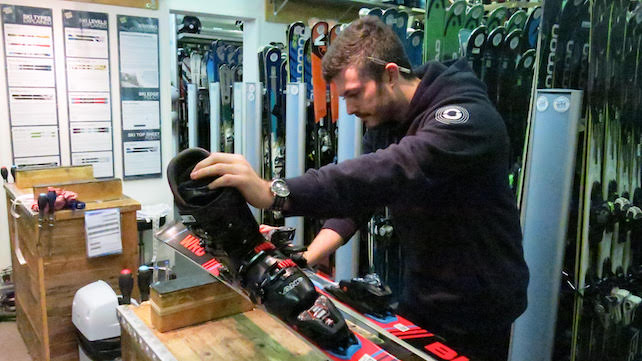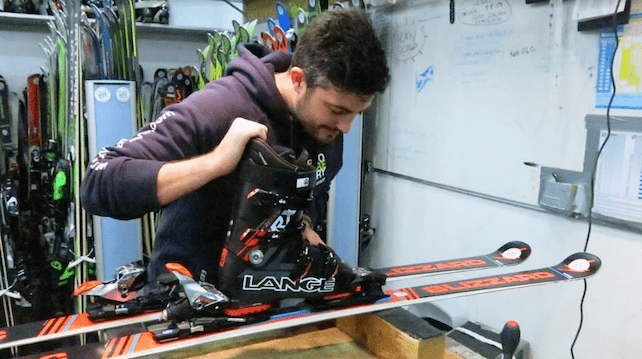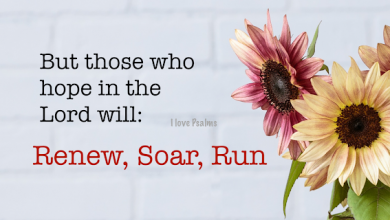The Good Ski and Boot Guide: Rental Step-By-Step

Since starting their first ski shop in Val d’Isere back in 1991, Scots Jock and Susan Dun have built their success on NOT just doing things the way all the other shops have always done but on what they call ‘Rental Done Right’.
For the last 10 years they have been involved in a joint venture in the ski hire shop, Snowberry, with former World Champion, Annie Famose. This season has seen another step forward for Snowberry, with the opening of their brand new Snowberry Streetside shop – to complement the existing Slopeside shop at Rond Point des Pistes – in the very centre of Val d’Isere.
Here’s Jock’s take on what makes ‘Rental Done Right’.
Ski hire is all the same, it’s just a question of getting the cheapest price – right? Well you couldn’t be further from the truth.
If you’re planning a ski trip, then sorting out your equipment hire will be high on your list of things to do. The age, the fit, the suitability and the condition of your equipment all make a massive difference to your ability to ski well and progress, not to mention to your comfort, safety and enjoyment.
The internet is awash with sites offering too-good-to-be-true deals on ski hire, and many of the big tour operators will try to sell you ski hire as well. Unfortunately, though, far too often they focus only on the price – as if ski hire was just a commodity – and not on the much more important issues of quality, service and suitability. Yes, of course the price is an issue, but it’s really about the best value for money rather than just the cheapest price or the biggest discount.
Book Direct If You Can
Contents
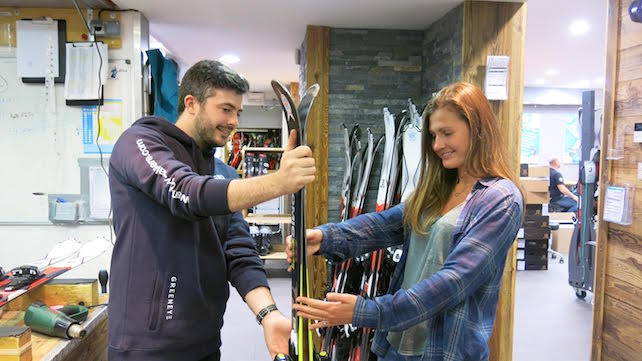 Choosing skis requires expert advice. Photo: © Jock Dun.
Choosing skis requires expert advice. Photo: © Jock Dun.
With third-party websites or tour operators you will often get little or no information about the shop you will be hiring from, its equipment or service, other than where it is and the price. Instead, do a bit of research to find a good shop in the resort you’re visiting and head to their own website if you can. Not only will you find a lot more information about the shop to allow you to make up your mind on whether to rent from them or not, but the chances are you may get a better deal as well.
If your chosen shop doesn’t have its own website (some don’t, especially in smaller resorts), you may have no option at the end of the day but to book through an agent or tour operator, but if you’ve done your homework you will at least know you’re getting the kit and service you want.
Quality and Age of Kit
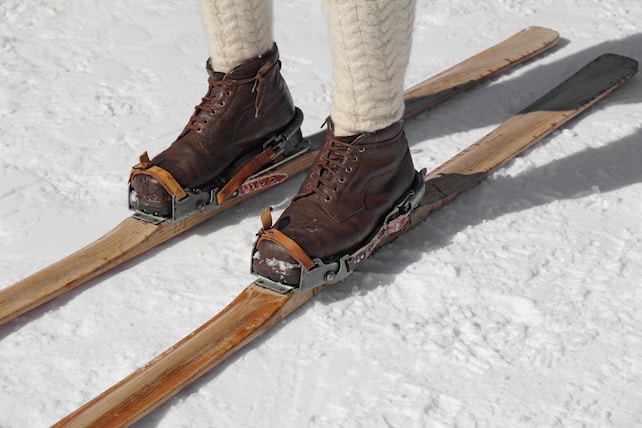
So many people seem to think “it’s just rental, it doesn’t really matter”, but it does. Skis and boots, like everything else, don’t last forever and yet there are shops out there still happily renting out kit that’s way past its sell-by date. This can mean that your skis just feel a bit sloppy or your boots are a bit uncomfortable, but it can also mean in extreme cases that the equipment is downright dangerous. There’s no need to settle for old rubbish, badly fitting or poorly serviced.
It’s nothing to do with scratches on the topsheet – even brand new skis scratch up pretty quickly and it doesn’t make a blind bit of difference to their performance. It shouldn’t be to do with the bases either – if the skis are properly maintained as all ours are, the bases should be reconditioned after every rental. The differences are in the things you can’t see.
The materials inside the core of the ski eventually break down, meaning an older ski is sloppier, less “poppy” and not as responsive. A newer ski is much more reactive and lively. The camber breaks down and softens so it’s no longer able to drive the ski into the snow, greatly reducing grip and feeling, so the ski will vibrate and flap around, especially on hard snow.
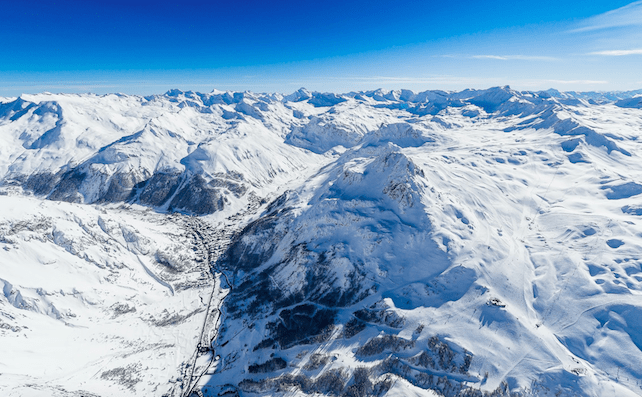
Also over time the edges become thinner and more rounded due to general wear and tear, rock damage and servicing and can’t be made as sharp as when they were new, so the ski doesn’t run as smoothly or grip as well.
At Snowberry we realise that different people have different priorities, so we organise our equipment categories a bit differently from the norm. Customers choose the age of their skis and pay more for guaranteed new skis and less for the slightly older ones.
The same applies to boots. Older boots lose their rigidity over time, as the plastic is continuously flexed thousands of times every day it softens to the extent of eventually pretty much collapsing. The liner breaks down and compacts, and the layers of foam delaminate – so far from having soft padding to protect you from the hard outer shell of the boot you just have a thin, floppy layer that doesn’t protect you from anything at all.
And then the toe and heel pieces wear down with use. An awful lot of shops don’t bother replacing them when they wear down – spare parts cost money! This is downright dangerous, even if the binding is functioning properly and safely it can’t hold the boot properly if the toe and heel pieces are worn.
So watch out for websites (third party or the shop’s own) that promise “recent”, “top quality”, or “high end” skis. None of these mean new! If they are guaranteeing you new season’s skis, they will say so. If they don’t, they’re not.
Shop Staff
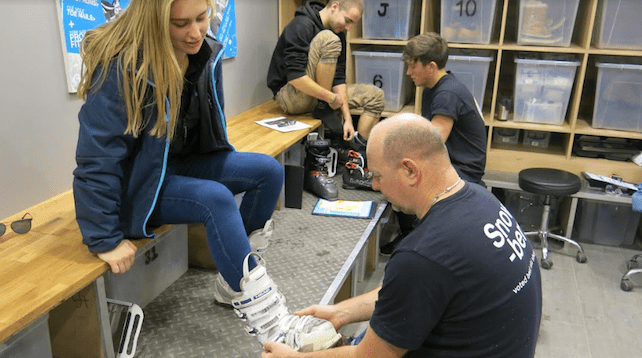
No matter how good a shop’s kit is, it’s still only as good as the technicians who fit, adjust and maintain it. And unfortunately the rental department is quite often the poor relation when it comes to staffing! Too often the experienced, skilled staff go into the sales departments and “just rental” is staffed up by a bunch of 18-year-old Saturday boys.
Boot fitting in particular is one area that takes not just knowledge and training, but practice and experience. I joke that the staff at Snowberry have combined ski shop experience of over 300 seasons between them – that’s a lot of feet!
If you’re lucky you may also be able to find a good shop employing English-speaking staff. It’s an awful lot easier to discuss the intricacies of skis and boots in your own language, and quite a few of the bigger resorts do have shops with at least some staff whose first language is English.
Boots and Bootfitting
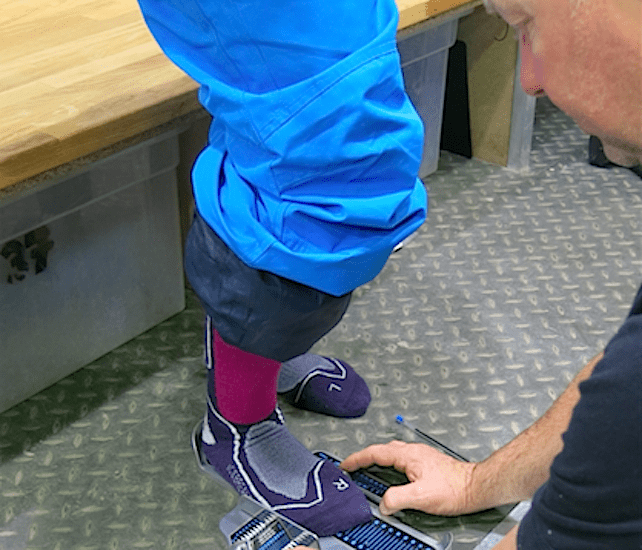
Getting your boots right is easily the single most important aspect of your skiing equipment. It affects everything: your control, your edge grip, your confidence and therefore your development and enjoyment. And yet in most rental shops “bootfitting” as we know it doesn’t even exist! Far too often they just ask your size, or if you’re lucky measure the length of one foot quickly, and then hand you a pair of boots.
The boots you end up with are usually at least a size too big, with absolutely no concern paid to your foot shape or volume. It’s easy for them to get you comfortable in the shop in boots that are too big, and get you out of the shop quickly. Then you wonder why your feet move around, you can’t control your skis or your feet hurt.
The rationale seems to be once again that “it’s only rental” but that’s all wrong. Shops spend hours fitting people who are buying boots, and rental boots are designed to do exactly the same job, so why is it okay to more or less throw boots at people as if they were bowling shoes?
There are a few shops – and unfortunately just a few – who do fit your boots properly. If you are considering which shop to rent from, how they fit rental boots should be one of your top priorities and if you are even thinking of buying your ski hire through a third party or tour operator this is one question you must ask.

Any decent shop should at the very least:
• measure BOTH feet and have a good look at your foot and lower leg shape, assessing also width, instep height and ankle
• put your boots on for you
• adjust all of the clips and explain how they all work and what they do
• check for fit and comfort
• have alternatives to offer you if the first boots you try are not right
The standard of rental bootfitting in many shops is so bad that many people don’t even realise what a properly fitting ski boot should feel like!
At Snowberry we now have an eight-point foot analysis system: length, width, instep height, arch height, foot stability, toe box shape, ankle/achilles and calf. We then look at your feet, not just in 3D, but also bringing in the 4th dimension – movement – as well.
My advice – if your toes don’t touch the end of the boot when you first put it on, it’s too big – and too big in length also means too big everywhere else. Once the boot is properly adjusted your toes will come back away from the front of the boot, the clips will hold your heel securely in the heel pocket and the overall feel should be like a firm handshake.
The Benefits Of Orthotics

If you buy your own boots, any reputable bootfitting shop will strongly recommend you start with a skier orthotic as the first foundation stone of a successful bootfit. I certainly feels strongly that every single skier, whatever their level and whether they are buying their own boots or hiring should have an orthotic in their boots.
Skier orthotics support and stabilise your feet inside your boots, limiting the natural dynamic behaviour of the foot – shape, length, height, volume change – help the foot maintain a constant shape and size, and allow the shop to choose a shell shape and length that very closely resembles that of your foot. An orthotic has a whole load of comfort and performance benefits and can solve many problems that you may have experienced in your ski boots for years…virtually immediately.
By supporting and stabilising the foot, an orthotic will help to reduce foot movement in the boot, which can cause rubbing and bruising. Blood flow is also improved, resulting in warmer toes. A supported foot has better contact with the boot and ski, resulting in better feeling and control, and it also improves body alignment – all of which lead to better performance.
While some shops do fit their rental boots with “footbeds” designed to improve hygiene, there are only a handful of shops worldwide that fit them with proper skier orthotics as we do. You can however buy your own. The basic “trim to fit” kind are not particularly expensive (£40 or so should cover it) and you can put them into your rental boots year after year. Remember to take them with you when you go to hire your boots!
Binding Adjustment
We’re regularly horrified when we hear how other shops set bindings and calculate binding release values, with everything from routinely setting all women on 4 and all men on 6 – dividing people’s weight in kilos by 10 and subtracting 1 – or literally just taking a look at you and having a guess!
We see more or less daily skis from other shops where even the supposedly easy bits – getting the centre of your boot in the centre of the skis and adjusting the forward pressure correctly for the length of your boots – are all over the place! We often have customers who are shocked when we ask their weight – they’ve never been asked before!
Correct binding adjustment would need a whole article of its own to explain in detail, but getting it right is crucial. It’s about setting the right balance between retention and release so that the binding mechanism will hold the boot in in most circumstances, but release just in time to prevent serious injury (usually a knee ligament) wherever possible.
There’s no legally-binding, or even universally accepted way of doing it right, but we certainly think that if you go into a shop that just seems to guess how to set your bindings without asking you a whole load of questions, then you should walk back out again.
At Snowberry we use the ISO recognised method, which takes into account your height, weight, age, skier type (which isn’t quite the same thing as your ability) and the size of your ski boots. We certainly think it’s the most accurate method.
If you do find a shop that seems to calculate your release value properly, it’s a good idea to keep a note of it in case the next shop you go to isn’t so particular!
Equipment Servicing

You would assume that if you are hiring skis they will have been freshly serviced and in tip-top condition when you collect them but all too often you would be wrong. One well-known French shop chain claims to have 25,000 pairs of skis and to service 65,000 pairs a season – on average that’s once every seven or eight weeks!
But no matter how good a ski is to start with, if it’s not serviced regularly – and properly – it quickly becomes more or less unskiable and can ruin the whole week that you’ve been saving for and looking forward to since this time last year. Unfortunately, many skiers are unaware that there is a problem with the skis and it is not just ‘their skiing’.
If you’re unsure about how well or how often the shop you are thinking of services their skis, ask them, the agent or the tour operator who is selling you the hire. If they can’t tell you, go somewhere that can. It’s that important.
Choose the Right Skis
Sometimes it can be hard to know what category or level of skis you should book. Often the names that shops and particularly third-party agents and tour operators use for their different equipment levels really mean nothing at all – superior, black, discovery, prestige etc etc. All you can really see is that one level is more expensive than another, but that’s not a lot of help.
It’s tempting to plump for the middle one and an awful lot of people do, but an awful lot of people then end up with equipment that is totally unsuitable for their ability level.
Then there’s the style of ski as well. Long gone are the days when there were pretty much two types of skis – the really skinny “slalom” ones and the slightly less skinny “GS” ones – and we did everything on them. These days skis are very specific and, while you can ski off piste on a modern race slalom ski or take a back-country freeride model through gates, you’d get on an awful lot better using skis for the purpose they are designed for!
So first of all you want to make sure the shop you are thinking of hiring from does have plenty of choice, and then you want to make sure it’s all clearly explained what the different options are and what level and type of skier they are best for. If you are unsure, contact the shop direct or ask your tour operator to explain, and again if they can’t give you a clear explanation of exactly what’s what, walk away and hire somewhere else.
Read the Small Print

As with everything else these days, be very careful of the small print and remember if you are paying for your ski hire through a third party agent or tour operator your contract is with them and not with the shop. Make sure you understand what will happen if something goes wrong.
Will you get a refund if you have to return your equipment earlier than planned? Do you have to pay more if you want to change your skis or swap to snowboarding for the day? What happens if you break a pole or your skis are stolen from outside a restaurant?
You might be shocked to find out your tour operator refuses to refund you any money if you are injured on day one, that you have to pay more for your kids to swap to a board for the last afternoon or that you are charged more than your skis cost the shop to buy in the first place if they are stolen.
All of a sudden a cheap price doesn’t seem like such a good deal after all. So make sure you know what you are letting yourself in for before you commit.
The Last Word

The long and the short of it is that price is not and should not be the be-all-and-end-all, ski hire is not a commodity like a bag of sugar, what you are actually getting for your money should be what matters.
The people best placed to tell you exactly what you are getting for your money is the shop itself. If you have to book through a third party or a tour operator, be very careful as there are certainly instances of tour operator staff downright lying to customers just to meet their sales targets.
You’ve no doubt spent hundreds (if not thousands) of pounds on your holiday and you probably won’t get time off to ski again until the same time next year.
Isn’t it worth getting the best skis and the best service you can get rather than tired, old gear that really should have been put in the bin years ago?
Your Views
What do you think makes a good ski hire shop and do you have any good stories – or disastrous ones – about rental equipment you’d like to share with us? If so, we’d love you to add them in the comments box below.
Last, Wallx.net sent you details about the topic “The Good Ski and Boot Guide: Rental Step-By-Step❤️️”.Hope with useful information that the article “The Good Ski and Boot Guide: Rental Step-By-Step” It will help readers to be more interested in “The Good Ski and Boot Guide: Rental Step-By-Step [ ❤️️❤️️ ]”.
Posts “The Good Ski and Boot Guide: Rental Step-By-Step” posted by on 2018-02-28 09:30:04. Thank you for reading the article at wallx.net
